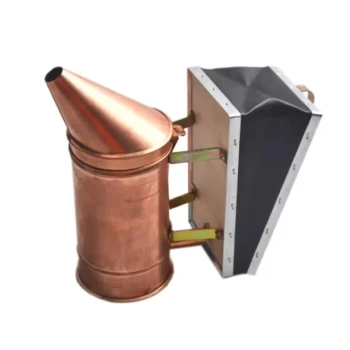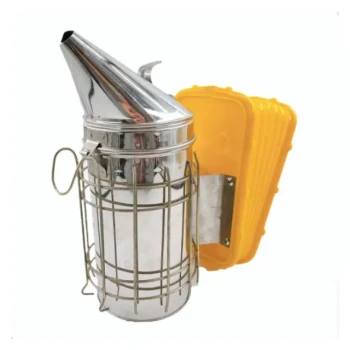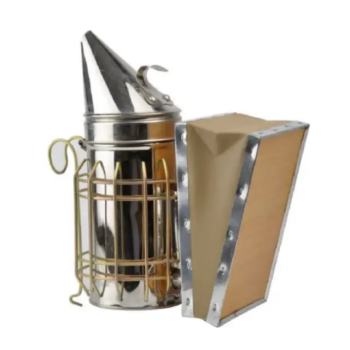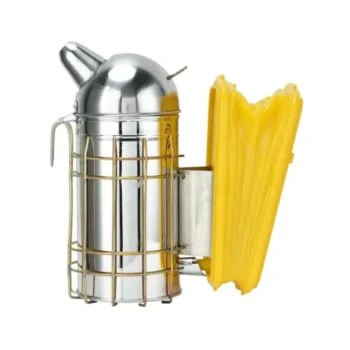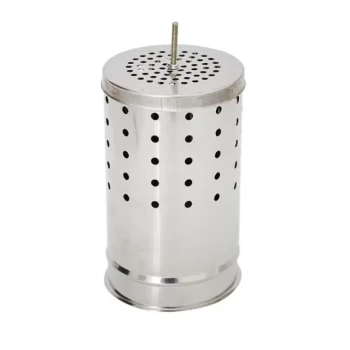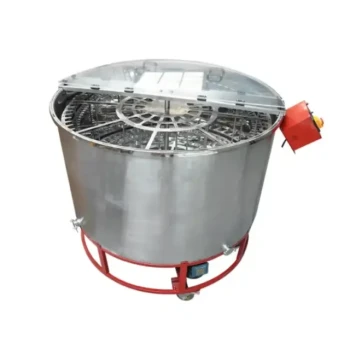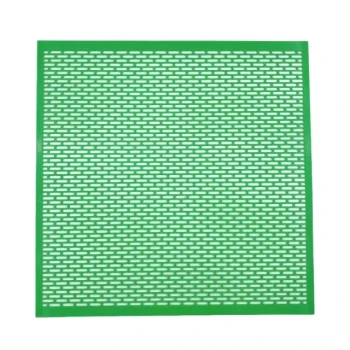A bee smoker is an ingeniously simple device designed around three core components. Its primary parts are a fire chamber to hold burning fuel, a set of bellows to supply air, and a tapered lid or spout to direct the resulting smoke. Additional features like a protective wire cage and a mounting hook are often included for safety and convenience.
The design of a bee smoker is not arbitrary; each part works in concert to produce a continuous supply of cool, thick smoke. The goal is to keep fuel smoldering slowly, not burning hot, allowing the beekeeper precise control over smoke delivery with simple puffs of the bellows.

Deconstructing the Bee Smoker: A Look at Each Component
To understand how a smoker functions, it's best to examine each part's specific role in the process. The design is a masterclass in controlled combustion.
The Fire Chamber: The Heart of Smoke Production
The fire chamber, or firebox, is the main body of the smoker, typically a cylinder made of stainless steel for durability and heat resistance. This is where you place your fuel, such as pine needles, wood pellets, or cotton fibers.
A critical and often overlooked feature inside the chamber is a perforated plate or grate. This platform holds the fuel up off the very bottom, ensuring air from the bellows can circulate underneath. This is essential for keeping the fuel smoldering evenly and preventing it from being smothered by its own ash.
The Bellows: The Lungs of the Device
The bellows are the manually operated pump attached to the side of the fire chamber. Their sole purpose is to force a jet of oxygen into the base of the chamber through a small opening.
Each squeeze of the bellows stokes the embers, increasing the rate of smoldering and pushing a thick puff of smoke out of the top. This provides the beekeeper with direct, on-demand control over the volume and intensity of the smoke.
The Lid and Spout: Directing the Flow
The lid contains the fuel and heat while funneling the smoke. It almost always narrows into a tapered spout or nozzle.
This design concentrates the smoke into a manageable stream. It allows the beekeeper to precisely direct the smoke into the hive entrance or under the inner cover without sending it billowing everywhere.
Essential Safety and Convenience Features
Beyond the core components, most modern smokers include features designed to make the beekeeper's job safer and easier.
The Heat Shield (Wire Cage)
The fire chamber becomes extremely hot during operation. A wire frame or heat cage is built around the chamber to create a protective barrier.
This simple addition is a crucial safety feature that prevents accidental contact and severe burns, especially when you're focused on handling hive frames.
The Mounting Hook
A small hook is often attached to the smoker, usually near the bellows. This feature allows a beekeeper to hang the smoker on the side of the hive box or attach it to a tool belt.
This frees up both hands for inspections, preventing the need to place the hot smoker on the ground where it could be a fire hazard or get knocked over.
Understanding the Trade-offs in Smoker Design
While the basic design is consistent, variations in size and build quality create important trade-offs.
Size and Capacity
Smokers come in different sizes, often described by the dimensions of their fire chamber (e.g., 4x11 inches). A larger chamber holds more fuel, meaning it will produce smoke for a longer period. This is ideal for beekeepers with many hives, as it reduces the need to refuel mid-inspection.
The downside is that larger smokers are heavier and can be more cumbersome to handle and store.
Material and Construction Quality
High-end smokers feature polished and welded stainless steel construction. This makes them more durable, rust-resistant, and easier to clean.
Less expensive models may use thinner metal or riveted connections. The point where the bellows nozzle enters the fire chamber is a common point of failure on lower-quality units.
Internal Airflow Design
The presence and quality of the internal fuel grate is a key differentiator. A smoker with a robust, perforated stand provides superior airflow, making it easier to light and keep lit.
Models lacking this feature often struggle with airflow as ash quickly clogs the air intake, causing the fire to go out prematurely.
Choosing the Right Smoker for Your Apiary
Your choice of smoker should align with the scale of your beekeeping operation and your personal priorities.
- If you are a hobbyist with one or two hives: A standard-sized smoker with a good heat shield and a bottom grate will be perfectly sufficient for your needs.
- If you manage multiple hives or perform long inspections: Invest in a larger, high-quality smoker with welded construction to ensure it stays lit longer and withstands heavy use.
- If safety and ease of use are your top priorities: Look for models with a sturdy, fully-encompassing heat cage and a hook, and ensure the bellows are easy to operate even with gloves on.
Ultimately, the best smoker is a reliable one that allows you to work calmly and confidently with your bees.
Summary Table:
| Component | Primary Function | Key Design Feature |
|---|---|---|
| Fire Chamber | Holds and smolders fuel | Perforated grate for airflow |
| Bellows | Supplies oxygen to the fire | Manual pump for on-demand smoke |
| Lid & Spout | Directs smoke flow | Tapered nozzle for precision |
| Heat Shield | Protects from burns | Protective wire cage |
| Mounting Hook | Provides hands-free convenience | Hook for hive or belt |
Ready to equip your apiary with a reliable, high-performance bee smoker?
HONESTBEE supplies commercial apiaries and beekeeping equipment distributors with durable, wholesale-focused beekeeping supplies. We understand that your operation depends on equipment that is safe, efficient, and built to last.
Let us help you choose the right smoker for your scale and needs. Contact our experts today to discuss our range of high-quality smokers and how they can enhance the safety and productivity of your beekeeping business.
Visual Guide
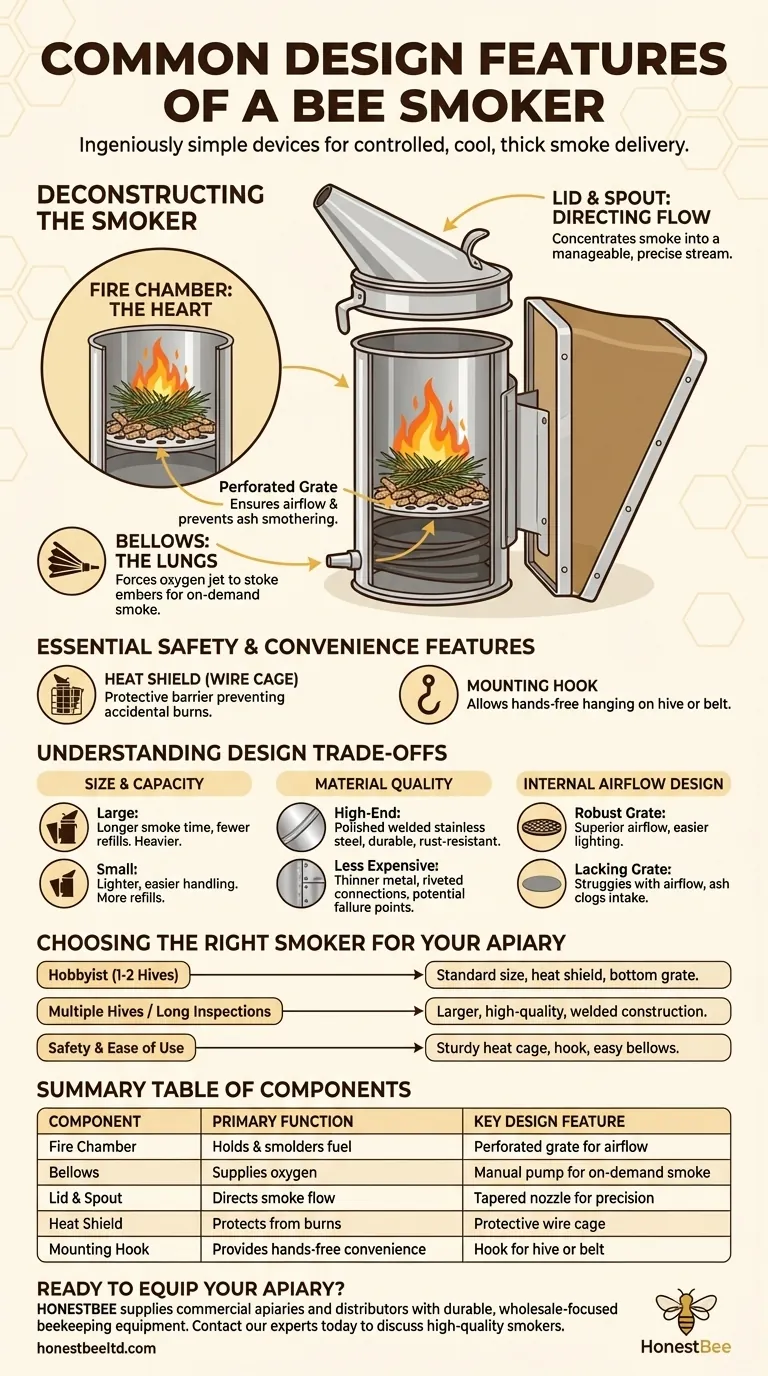
Related Products
- Premium Traditional Copper Bee Smoker with Bellows
- Economy Galvanized Beekeeping Honey Bee Smoker for Wholesale
- European Stainless Steel Bee Smoker for Honey Bee Hive
- Professional Bee Smoker with Elongated Spout and Durable Bellows for Beekeeping
- Heavy Duty Manual Bee Smoker Blower for Beekeeping
People Also Ask
- What are the benefits of using smoke properly in beekeeping? Achieve Calm, Safe Hive Inspections
- What is a Smoker and how is it used in beekeeping? The Essential Tool for Calm, Safe Hive Inspections
- How does water mist work as an alternative to smoke in beehives? A Guide to Safe & Effective Use
- What are the main parts of a bee smoker? Essential Components for Calm Hive Management
- What are some alternatives to using smoke in beekeeping? A Guide to Gentle Hive Management
